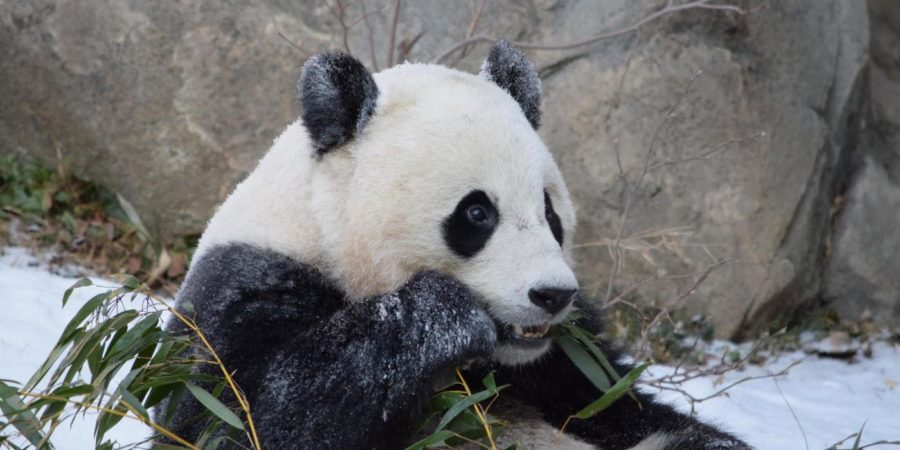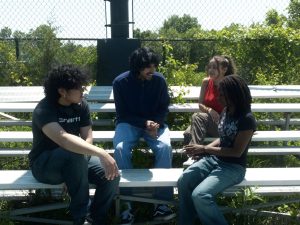Bye Bye, Bao Bao
Zoo Officials and Admirers Say Goodbye to a National Treasure
April 6, 2017
Bao Bao, the three-year-old giant panda born at the National Zoo in August 2013, departed from Dulles International Airport on February 21st to join China’s giant panda breeding program in Chengdu.
With plenty of bamboo, apples, and sweet potatoes to keep her occupied on the 16-hour flight to her new home, Bao Bao bade good-bye to Washington.
As a part of the cooperative breeding program with the China Wildlife Conservation Association, Bao Bao and all panda cubs born in any of the the United States’ four zoo programs are required to be relocated to China when they turn 4 years old. While the giant pandas are no longer endangered, they are still listed as “vulnerable” by the International Union for Conservation of Nature according to the National Zoo & Conservation Biology Institute. Giant pandas are not yet safe from threats, such as habitat destruction and low reproductive rates, and scientists in China are working to reintroduce giant pandas born in human care – at zoos – into the wild.
While many pandas live in conservation areas, about 1,864 wild giant pandas still live in central China’s Sichuan, Shaanxi, and Gansu Provinces. This is a significant increase from the 2003 survey of pandas, when 1,596 pandas were estimated living in the wild. Also, according to National Geographic, around 67 percent of wild pandas live within China’s 67 nature reserves, which means about a third of them remain outside of protected areas. China wishes to continue this trend of reintroducing pandas into the wild, hoping to push giant pandas from “vulnerable” to “least concern” one day.
Bao Bao is not the first panda cub to be sent back to China since the National Zoo received its first two adult pandas, Ling-Ling and Hsing-Hsing, on loan from China in the 1970’s. Bao Bao’s brother Tai Shan, the first surviving panda cub born at the National Zoo, was sent back in 2010. One more cub still lives at the zoo, Bei Bei, who was born in 2015. He will remain at the zoo for now, but when he turns four, he too will depart and become part of China’s panda breeding program in Chengdu.
The other U.S. zoos that are home to giant pandas include Zoo Atlanta, which has four, San Diego Zoo, which has three, and Memphis Zoo, which has two. Zoos in Atlanta and San Diego have also sent back panda cubs, including two twin cubs from Atlanta in 2016.
The morning of Bao Bao’s departure was bittersweet for many. Many saw Bao Bao as the miracle baby because her mother, Mei Xiang, failed to conceive for seven years. Many of her keepers stood crying as they watched Bao Bao being loaded into her crate. Even though the keepers knew since her birth that her departure was inevitable, they couldn’t help but form a bond with Bao Bao.
Laurie Thompson, the assistant curator of giant pandas at the National Zoo, told The Guardian that keepers have been preparing Bao Bao to leave for China since she was born. “We’re ready. We’ve done our part, and we’re ready to send her to China so she can have her own babies someday,” Thompson said.
During her first month in China, Bao Bao will go through a quarantine, so researchers can monitor her diet, activities, and health. After this, she will be released into China’s conservation park, where eventually she will be encouraged to breed, hoping to raise the giant panda population.
It’s important to protect these beautiful animals while we still have them, and sending our pandas to China is doing just that.










































